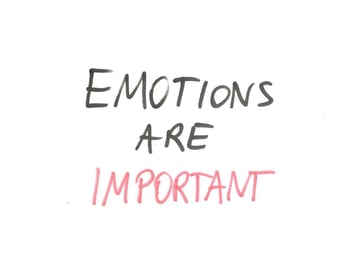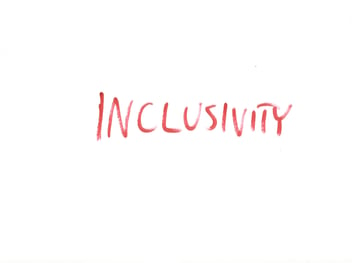 This article was originally published during the period of emerging from COVID-19 lockdowns. However, the key insights and main points remain highly relevant and applicable today.
This article was originally published during the period of emerging from COVID-19 lockdowns. However, the key insights and main points remain highly relevant and applicable today.
Mental health and well-being needs to be a priority right now. The pandemic of COVID-19 has already impacted us, continues to do so and will affect everyone – not just those of us who are in business. Even if the pandemic is contained this year, what has already happened will affect us in the long term. This is a bold statement, but there is supporting data. In a recent study(1) the percentage of adults with recent symptoms of anxiety or a depressive disorder increased to 41.5%.
I think it is really important to remember this is not only about line employees – it is about ALL people involved in companies; owners and management teams included. Therefore, I believe we need to look at our mental health as well.
In terms of business, I think an increase in mental health problems can negatively impact people’s ability to make, build and maintain relationships. It also affects their ability to create value which will impact overall productivity. Decreased productivity in the short term, is something which we need to accept and accommodate (as we need to reorganise). The most important actions to undertake, will aim to ensure that decreased productivity won’t be an issue in the longer term.
I talked with a senior manager from a large company recently. He told me a story about an employee who started to have personal problems with his partner. The behaviour of his partner had significantly changed during lockdown which had, in turn, changed their personal relationship. Although he is fine right now, it immediately impacted his ability to work; to create and deliver value for the company. In this case, the manager was highly aware of the importance of it, so the company was well prepared to support the employee. Of course, the company is not in a position to solve the issue, but the right support helped this person to manage in the difficult time, while allowing the person to deliver value to the business. Please note, this is short-term issue for now, but could easily expand into a long term personal problem, which could damage his ability to create and deliver value for the business in the long term.
What can leaders do about it?
We need to realise the majority of managers don’t have qualifications to deal with mental health and we can’t expect they will gain any. Mental health is a separate area of expertise, so we need to secure proper external support.
External support
We need to build awareness of how to react when team members have challenging issues; how to collaborate with them and how to refer someone who needs professional help. In most cases, the external specialist will be needed to train the whole management team. Supporting people who suffer can impact people who are trying to help. In this case, it means that external support needs to be provided – not only to refer team members in more difficult cases, but also to provide the right support to the management team.
Is there anything managers can do right now?
My thesis is that companies who invest in healthy organisational cultures will be more stable, and have more chances of survival, or even growth in the future. The companies with healthy cultures will probably support the mental health and well-being of their employees by default. They are more likely to be better at mitigating stress factors and supporting recovery. If you haven’t invested in these aspects of your organizational culture so far, now is the time to start. Here are a few things you should start integrating into your company’s organizational culture:
- Adapt the approach ‘I don’t know – my employees know’. Rapport McKinsey shows something very interesting: a significant disconnection between employers and employees around mental health(2). This means that managers are at risk of being convinced that they have already achieved a lot and the results are satisfactory. Meanwhile, their team could have completely different views on it. This distortion can lead to strong tensions within a company. Adoption of the approach ‘I don’t know, my employees know’ and talking to the team as early as possible to consult with them, recognise their needs and find insight into the current perception of the team. Their feedback needs to be taken seriously and every point needs to be accommodated for. If this is not possible, explain why there is no action taken. Deeds not words 🙂
- Secure psychological safety. What is psychological safety? Basically it is a kind trust. Trust that everyone in a team is safe to undertake interpersonal risks. For example, to share ideas, concerns, and mistakes without the fear of punishment or humiliation. Psychological safety is subjective – it’s not about what you declare – it’s about what members of your team experience. Psychological safety is important in many dimensions (e.g. The teams with high psychological safety perform better). With regards to the impact of the pandemic, the companies who invested in psychological safety will deal better with mental health issues experienced by their employees. People in such a company will mitigate stress by sharing concerns in a trusting environment, and are more likely to support each other. This will help prevent health mental issues and support recovery.
- Be emphatic and positive. In a world where relationships are often built via flat, cold monitors, we need to pay extra attention to the way we communicate with people. Emotions are important – it’s not about emotionalism, it’s about realising that emotions tell us about our human needs. In other words, taking emotions into account can help us to hear each other (and understand ourselves better). When people understand their needs and are ready to care about them, relationships become more deep and trust increases. This helps in collaboration, but also directly supports the mental health of team members.
It is important to allow people to talk and share, and not only in a business context. It is important to take into account their private lockdown experiences in order to share and support them. People need to go through this process to reconnect. I think leaders need to take part in this process – this is a great way to integrate yourself with a team; the fact that leaders are sharing their experience will help team members share their stories as well. An important point is that this process needs to be voluntary – people have different needs for speaking out and you should let them consciously decide how deeply they want to go into the working relationship. It is important that this should not be a one-time action, and that the systematic practice, with allocated resources, is maintained. It may take the form of regular informal team sessions combined with informal 1-2-1 conversations.
And here the role of the leaders is extremely important; many people will be scared after the pandemic, some of them might be quite negative or full of doubts about the future. It is a leader’s responsibility to prove to people that there is a future. This can be challenging, but there are opportunities to explore and all we need to do is to focus on positive actions. - Think about co-creation. Let employees invent / take part in the process of rediscovering their workplaces, let them have an impact on the environment and what the professional reality looks like. Adjust the level of this action to their needs and possibilities. It builds a sense of agility and control, and it supports mental health. It is important to be flexible – different people may have different needs for independence. We need to adjust it to individual needs. This is a process that must be carried out at both the team and individual levels. In such a process, you need to focus on the small steps, learn from them and implement it in the next steps.
In the long term, this will not only improve mental health but also help you create a more flexible organization. - Measure and be accountable. However difficult it is, make mental health and well-being measurable. Just as you measure processes with metrics, you also need to get metrics about mental health in your organization. Research and measure the results of your actions. Learn from the results and don’t be afraid to ask the team what you can do better or different with them to improve your well-being as a team.
Sources:
- Vahratian A, Blumberg SJ, Terlizzi EP, Schiller JS. Symptoms of Anxiety or Depressive Disorder and Use of Mental Health Care Among Adults During the COVID-19 Pandemic — United States, August 2020–February 2021. MMWR Morb Mortal Wkly Rep 2021;70:490–494.
- “National surveys reveal disconnect between employees and employers around mental health need”, April 21, 2021, McKinsey & Company.



